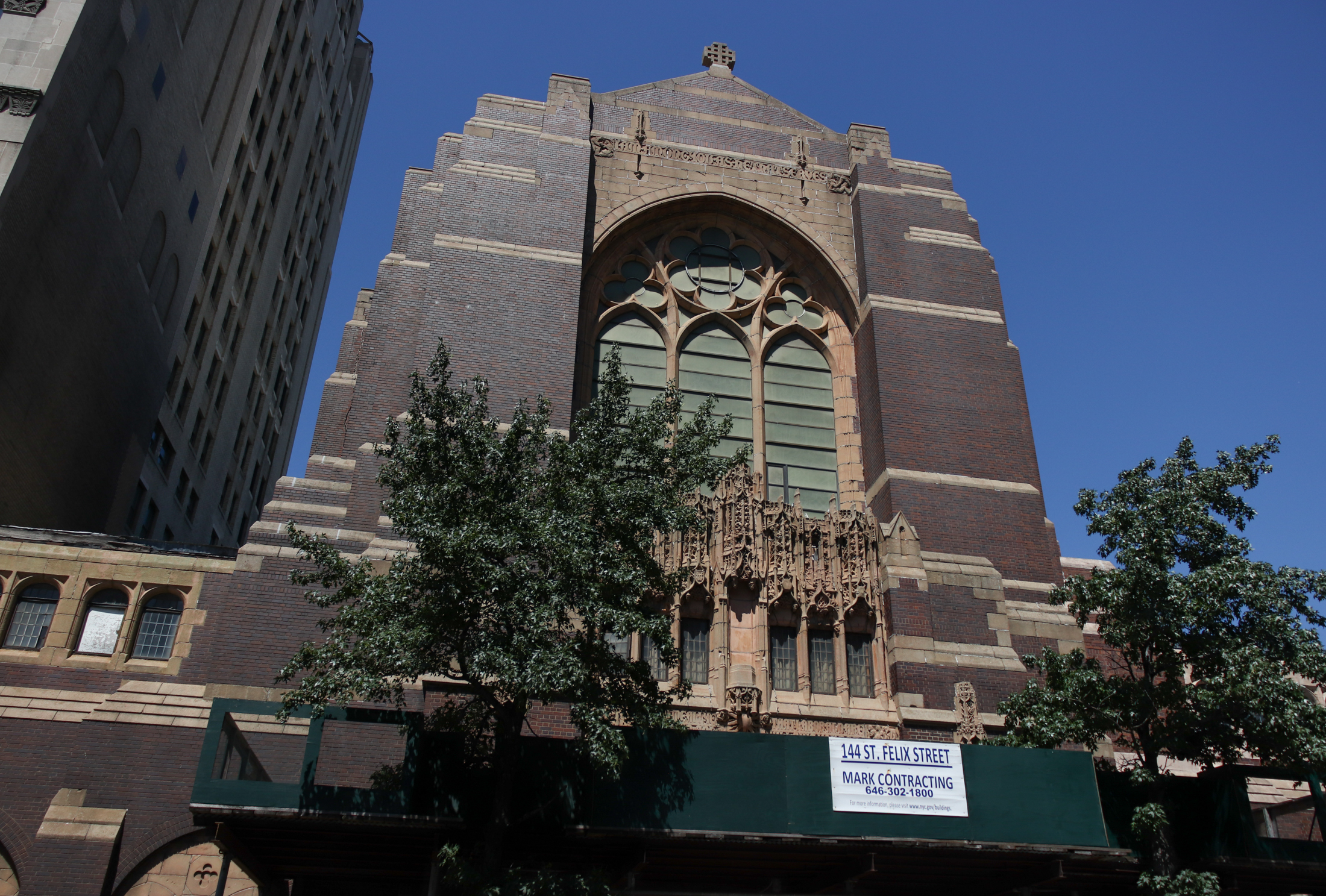Building of the Day: 373 Carlton Avenue
Brooklyn, one building at a time. Name: Private house Address: 373 Carlton Avenue Cross Streets: Lafayette and Greene avenues Neighborhood: Fort Greene Year Built: Late 1860s Architectural Style: Second Empire Architect: Unknown Landmarked: Yes, Part of Fort Greene Historic District (1980) The story: Unlike its next door neighbor, Clinton Hill, Fort Greene is not known…

Brooklyn, one building at a time.
Name: Private house
Address: 373 Carlton Avenue
Cross Streets: Lafayette and Greene avenues
Neighborhood: Fort Greene
Year Built: Late 1860s
Architectural Style: Second Empire
Architect: Unknown
Landmarked: Yes, Part of Fort Greene Historic District (1980)
The story: Unlike its next door neighbor, Clinton Hill, Fort Greene is not known for its mansions. Sure, there are a few pretty impressive row houses here that qualify as mansions in comparison to smaller houses, but as for large houses on large lots –- not so much. Fort Greene is largely a speculative row house neighborhood. But scattered here and there, you come upon surprises. Like this large brownstone mansion, one of the largest houses in the Fort Greene Historic District.
According to the Landmarks Preservation Commission’s report, the house was built in the late 1860s. In design, it is very much in keeping with urban mansions in Brooklyn, and is similar in design to houses of the same period in Clinton Hill, and elsewhere. It is a generous 36 feet wide and 45 feet long, on a 100 foot deep lot.
I was not able to determine who actually had it built, perhaps Postmaster Samuel Booth, who lived here in 1873, but the longest owner was perhaps its second owner, a German-American banker named Max Ruckgaber. He was born in Stuttgart, Germany, and immigrated to the United States with thousands of other Germans in 1848. He began as a merchant, but by the time he moved into this house, he was a prominent banker. A look at Brooklyn City directories show that before he moved here in 1880, he lived down the street at 352 Carlton Avenue.
The Ruckgaber family needed a big house. Max was married twice. His first wife was named Celestine Arras. She died only a few years after they wed, and he married Emma Sophie Aldolphine Goepel in 1868. Emma outlived him. Between both wives, there were seven sons and four daughters. Sons Max, Jr. and Albert are most mentioned in connection with this house. Eldest daughter Emmy was married in a ceremony here in 1906.
Max Ruckgaber was very active in Brooklyn’s affluent German circles. He belonged to the Germania Club, and was also an active member of the Downtown Association. He suffered a heart attack at the age of 80 and died here at home, where his funeral took place. He’s in Green-Wood Cemetery, along with other family members. He was survived by Emma and his 11 children.
Max Ruckgaber, Jr. also went into banking. He, along with Casimir Tag, another prominent German-American banker, was a trustee in the People’s Trust Bank, where he later became the director. He was also a partner in Schultz & Ruckgaber, a brokerage firm. Max moved out before his father’s death and lived in Park Slope with his family. By 1912, he had moved to Argyle Road in Prospect Park South, where he died in 1926.
Albert Ruckgaber, the fourth child, lived here after his parent’s death. He became an electrical engineer. His younger brother, Otto, went to Cornell. He embarrassed the family by being arrested in 1914, along with two other Cornell buddies, in Binghamton, N.Y. The three had made a wager with other students that they could make the almost 285 mile trip to New York City from Cornell in time for dinner. While in the Binghamton area, they caused the overturn of a wagon, injuring several people. After being bailed out of jail, they still headed for New York City to try to win that bet.
Albert and Otto were later partners in Arthora Talking Machines, a retail store at 60 Court Street, downtown. Think of them as forerunners of today’s upscale audio component shops. They opened it in 1920. An article in Brooklyn Life, which chronicled the doings of Brooklyn’s Society folk, wrote about a radio that the shop was selling in 1926 that retailed for $900 or $1,000, depending on the wood cabinet. That’s 1926 money, which would be many, many thousands now. They also sold Victrolas and records. Further documentation shows that they also manufactured radios.
Albert also made the papers frequently because he owned a car. During the first two decades of the 20th century, the papers published the name, address and make of every registered car in Brooklyn. Owning a car then was a rich man’s hobby, so the list, while getting longer every year, was still manageable by the paper. Albert must have loved his cars, because every year he had a different make and model of automobile. He probably would have been thrilled to have seen the high end audio that can be put in cars today.
The Ruckgaber family had all moved to other parts of the city by the 1930s. By 1938, this building was home to the African Inland Mission Home, which sent missionaries to the Congo and other parts of Equatorial Africa. They were headquartered here until at least 1945. That year, the Mission lost Rev. Paul Whitlock, his wife Helen and their three sons, who were killed in a plane crash in the Caribbean. The Pan Am flight was traveling from Florida to West Africa.
It’s not known when the Mission Home gave up the building. It seems to have been apartments ever since. Today, it is called the Mayor’s House, and is a three family home.
(Photograph: Nicholas Strini for PropertyShark)










What an amazing story….Iwonder why the Ruckgaber family decided not to keep the home.Thanks for sharing this story!